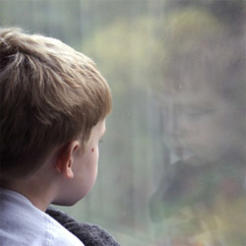Many people feel charity advertisements go too far in portraying distressing images and situations, or in making them feel guilty for not donating, according to a report for the Advertising Standards Authority.
The ASA said it was surprised to discover in research it commissioned that there is a level of public concern about hard-hitting charity advertising and public service adverts. The findings are revealed in its harm and offence report which gauges public opinion which the regulator uses as a guide for its decision-making on adverts.
The report read: “Many participants felt that some charity adverts contained offensive content that went too far in seeking to make people feel uncomfortable or guilty, or used imagery that was considered too distressing despite being for a worthwhile cause.”
Some adults believed that charity advertising had purposefully targeted children in order to harness their ‘pester power’ to get parents to donate. Children themselves reported feeling distressed by charity advertising, but also upset due to their inability to help.
These findings jar with a YouGov report from 2010 which found that four out of five people believed shock tactics are justified in charity advertising.
International aid organisations, animal welfare charities and child protection organisations were singled out as being “frequently cited” by survey participants asked to remember adverts they found offensive.
However, the ASA said that the issue of charity advertising polarised the public. Opinions were far more emphatic on issues of sexual and sexist advertising.
The ASA said that some people viewed gritty charity advertising as a “necessary evil”. “In this case participants could at least understand why charities benefit from seeking to encourage an emotional response through their adverts. Indeed, a significant minority supported charities using strong imagery to highlight they cause more effectively,” the report concluded.
Advertising on television, the internet and posters and billboards were perceived to be the biggest culprits of harmful or offensive content, according to the study. In the Fundraising Standards Board's annual report on fundraising complaints these three types of advertising scored very well in terms of numbers of complaints to volume, with television prompting just 440 complaints in 2011.
Colin Lloyd, chair of the FRSB, welcomed the report’s findings that many people supported charities’ need to get across the seriousness of their cause. He added: “It is clear there is a balance to be struck between charities’ needs to build causal awareness and public support with risk to their reputations from the negative impact of advertising that is felt to be distressing.”
Only 16 per cent of adult respondents to the ASA research, conducted by Ipsos Mori, said they had been offended by an advertisement in the previous year.









